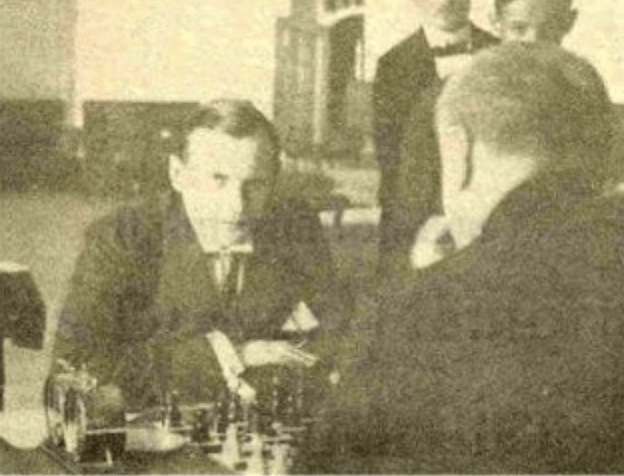
A Century of Chess: Bad Pistyan 1922
This was effectively a memorial tournament for Gyula Breyer, who had died the previous year. Just before his death he’d suggested reviving the Bad Pistyan tournaments, which had been a feature of the pre-war chess landscape.
Bad Pistyan was Bogoljubow at his best — a long tournament with a field of mixed quality in which his fighting qualities could come to the forefront. Bogoljubow is a good player to study for those with a slightly sociopathic disposition. He seemed never to not be attacking, never to not be looking to inflict the maximum amount of pain on his opponent.

That could lead to his overextending himself, but more often than not it resulted in the sort of savage attacking games that he showcased in this tournament.
The tournament was largely a race between Bogoljubow and Alekhine, with Bogoljubow's +12 score narrowly eclipsing Alekhine's +11.
In the last round, Richard Réti, playing with the black pieces, held Alekhine to a draw, while Bogoljubow kept up steady pressure against Max Euwe and finally crashed through with an attack. Rudolf Spielmann had a strong late run (5.5 out of 6 down the straightaway) and caught Alekhine to tie for second place.
The tournament takes its place in chess history primarily for literary reasons. Richard Réti employed several of its games for his player biographies in Masters of the Chessboard: for many chess players, Bad Pistyan is their introduction to Bogoljubow, Grünfeld, and the Blumenfeld Counter-Gambit. And in Stefan Zweig’s Schachnovelle, possibly the most famous chess fiction ever written — and maybe even the most famous chess book — the critical plot point hinges on a position taken from the Alekhine-Bogoljubow game in this tournament.
Tartakower and Tarrasch had setbacks — which was more surprising for Tartakower who was coming off a string of successes. Grünfeld continued his run towards the world’s elite — earning himself a spot in Masters of the Chessboard with his fourth place finish. Heinrich Wolf, who hadn’t been heard from in over a decade, finished with an impressive positive result.
Sources: Edward Winter has great photos from the tournament here. The tournament is discussed in Masters of the Chessboard and, more unexpectedly, in Chess Story.

